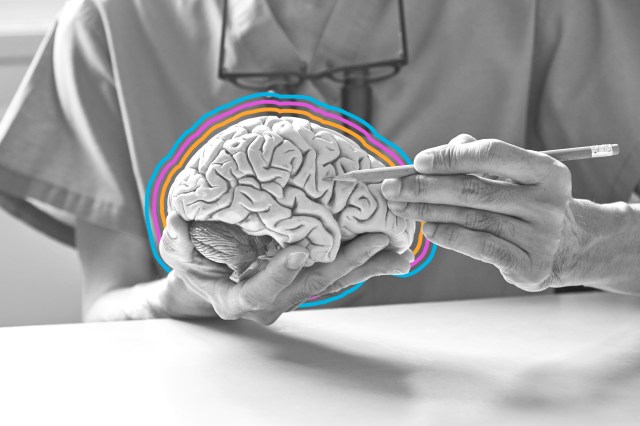
The Long Climb to Maturity
When we talk about mental agility — how quickly we can reason, adapt, or learn new information — we’re referring to fluid intelligence. This ability underpins problem-solving, pattern recognition, and the capacity to think on our feet. Research suggests that fluid intelligence peaks relatively early, often in the late teens to early 20s for processing speed, while some aspects of fluid reasoning and short-term memory may continue to improve into the late 20s or early 30s.
That early advantage has biological roots. During adolescence and young adulthood, the brain undergoes synaptic pruning and increased myelination, refining connections and optimizing speed.
Importantly, the prefrontal cortex — responsible for planning, impulse control, and decision‑making — continues to mature into the mid‑20s and early 30s. As a result, adults entering their 30s are often better equipped to manage complex tasks, set long‑term goals, and regulate emotions than they were just a decade earlier. In other words, younger brains may process information faster, but older brains often make better choices.
So if “peak” brain function means raw speed, that typically occurs in our youth. But if it means the integration of knowledge, empathy, and problem-solving — the ability to balance logic with perspective — the real peak likely comes later, in our 50s, 60s, or beyond.

The Rise of Knowledge and Judgment
If fluid intelligence gives us speed, crystallized intelligence provides depth. This form of intelligence reflects our accumulated knowledge, vocabulary, and experience-based understanding — and it tends to increase for decades.
Studies have shown that adults in their 40s, 50s, and 60s continue to expand their vocabularies and refine their decision-making skills. In fact, when researchers combined reasoning, verbal ability, emotional understanding, and moral insight into a composite measure of cognition, they found that the average mental “peak” occurred between ages 55 and 60.
Experience strengthens connections between brain regions, allowing older adults to integrate information more effectively. Tasks that rely on judgment and perspective — managing a team, interpreting social cues, or solving nuanced problems — often favor those with years of lived experience. Research has also found that older adults are less likely to make impulsive decisions or fall prey to cognitive biases such as overconfidence thanks to a lifetime of trial and reflection.

Different Peaks for Different Skills
A 2015 study based on data from about 48,000 participants found that different mental abilities peak at different ages, rather than all at once. Processing speed tends to reach its height in the late teens or early 20s, while short-term and working memory often top out in the late 20s to early 30s. Vocabulary and other knowledge-based skills, however, continue to improve well into middle age, with some measures peaking in the late 60s or even early 70s.
This variation reflects the brain’s adaptability. Younger adults excel at rapidly learning new skills, while older adults draw on broader context and emotional insight. For example, a 25-year-old may be able to master a new app more quickly, but a 60-year-old may approach a difficult decision with deeper understanding and better judgment.
Brain imaging studies have shown that as people age, the two hemispheres of the brain tend to work together more frequently — a phenomenon captured by the HAROLD model (hemispheric asymmetry reduction in older adults). Younger adults usually rely more on one hemisphere for specific tasks (for example, left for language and right for spatial reasoning), while older adults often use both sides. Researchers believe that this shift helps compensate for slower processing speed and declining neural efficiency, allowing older adults to maintain cognitive performance.
Emotionally, the brain often gains ground as it matures. Research shows that the amygdala — which helps process fear and negative emotions — tends to respond less strongly to negative stimuli in older adults, while the prefrontal cortex engages more strategically to regulate emotions. The result is often a calmer, more balanced emotional state.
Many adults in midlife report experiencing fewer negative emotional swings and the ability to focus more on meaningful goals, which can support clearer thinking and more thoughtful decision-making.
More Interesting Reads

Keeping the Brain at Its Best
While some cognitive changes are inevitable with age, lifestyle plays a major role in maintaining brain health. Physical activity is one of the strongest predictors of long‑term cognitive function: Regular aerobic exercise, even brisk walking, boosts blood flow to the brain, stimulates the growth of new neurons, and supports the hippocampus, a key region for memory.
Nutrition and mental engagement also matter. Diets rich in fruits, vegetables, fish, and healthy fats are linked to slower cognitive decline, with omega‑3 fatty acids in particular supporting neuron health and reducing inflammation. Learning new skills, tackling puzzles, exploring hobbies, or practicing music and languages stimulates neuroplasticity — the brain’s ability to form and strengthen connections — and is linked with reduced risk of cognitive decline.
Social and emotional factors further protect cognition. Maintaining strong relationships and a high level of community involvement counteracts loneliness, which is associated with faster cognitive decline and higher dementia risk. Adequate sleep allows the brain to clear waste proteins that can impair cognition, while managing stress through meditation, yoga, or quiet reflection helps preserve neurons and supports long‑term mental resilience.
At the end of the day, rather than asking when the brain peaks, it may be more accurate to ask which kind of intelligence we’re measuring and how we’re nurturing it. After all, the brain’s greatest strength may not be its speed but rather its remarkable ability to evolve throughout our lifetimes.












